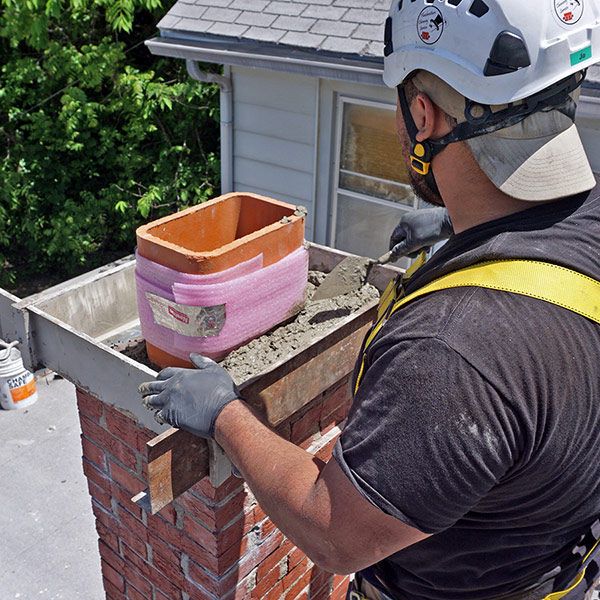The Ultimate Chimney Cap Guide
Many people have questions on chimney caps. You may be wondering “Do I need a chimney cap?” or “How tall should a chimney cap be?” We will walk you through the most important facts you should know about chimney caps by answering commonly asked chimney cap questions.
At Boston’s Best Chimney, we are a full service chimney company specializing in every aspect of chimney maintenance and repair. If you would like a chimney cap installed or repaired, click here or call (781) 893-6611 to schedule a free estimate.
Here are our answers to some popular chimney cap inquiries:
What is a Chimney Cap?

A chimney cap sits on top of the chimney and protects your flues from debris, rain, and snow. It covers the chimney like a hat and usually has mesh around it to keep animals out of your chimney.
Chimney caps sit on the uppermost part of the chimney, the crown, and is the first line of defense against the elements. The chimney crown also works to keep water out of the chimney, but the cap has the mesh sides to allow for venting
Do I Need a Chimney Cap?
We highly recommend having a chimney cap installed. Not only does it significantly reduce the amount of water that enters your home, but it also works as a spark arrestor, preventing sparks from existing the chimney onto your roof or nearby trees. Having a chimney cap can also prevent animals from entering and potentially dying inside of your chimney, which can cause health issues. Read more about why we think chimney caps are essential.
How Tall Should A Chimney Cap Be?
Your chimney cap should be at least eight inches above the top of the flue tiles that it’s covering, though it is ideal for it to be more than eight inches above. This will ensure that the chimney cap doesn’t interfere with your chimney’s draft, which controls how well smoke is pulled up and out of your chimney.
What is a Chimney Cap Made Of?
Chimney caps are most often made of stainless steel or copper and come with a lifetime warranties against defects and corrosion. Caps made or lesser quality steel often rust and can stain the chimney and surrounding roof.
Can I Install My Chimney Cap Myself?
We recommend hiring a professional to install your chimney cap. Installation of a chimney cap will require you to climb onto your roof, which is a job best left to professionals. Also, installing a chimney cap can be complicated, especially if your chimney is old. Experienced professionals will know the size and type of chimney cap that is right for you.
A well-made and properly fitting chimney cap will make your chimney look finished and beautify your home. If you have a chimney without a chimney cap, or if your chimney cap is old or damaged, we are here to assist you. Click here or call (781) 893-6611 to schedule an estimate.
The post The Ultimate Chimney Cap Guide appeared first on Boston's Best Chimney.

 Leaky chimney
Leaky chimney

 Offensive odors permeating from the chimney can linger through the whole house. It is one of the biggest complaints that we hear from customers during the summer months. Installing air fresheners only masks the problem. And when it gets hot outside, closing the windows and turning on the air conditioning will intensify the smell. To eliminate the problem, it must be done from the source and usually includes a thorough chimney cleaning.
Offensive odors permeating from the chimney can linger through the whole house. It is one of the biggest complaints that we hear from customers during the summer months. Installing air fresheners only masks the problem. And when it gets hot outside, closing the windows and turning on the air conditioning will intensify the smell. To eliminate the problem, it must be done from the source and usually includes a thorough chimney cleaning.



 Types of Chimney Cap Materials
Types of Chimney Cap Materials
